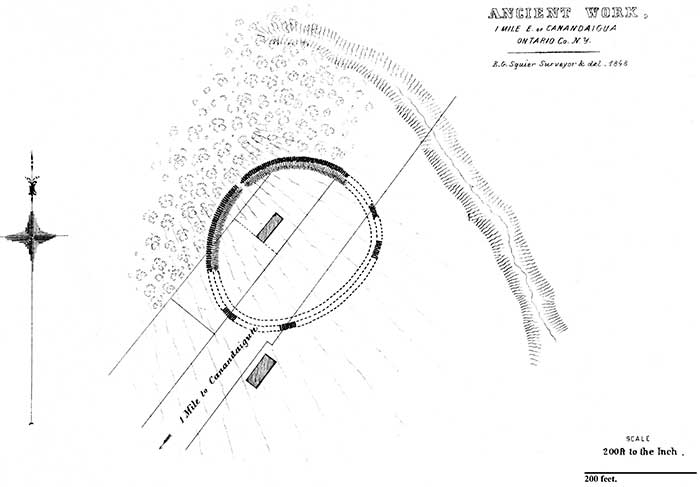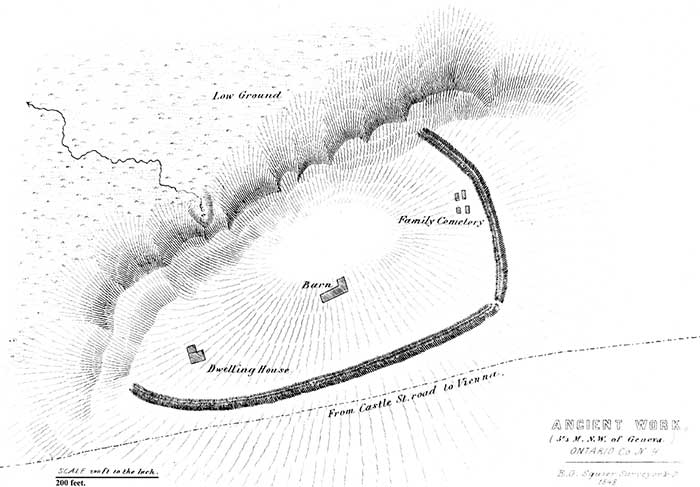ONTARIO COUNTY.

PLATE VI. No. 2.
ANCIENT WORK; NEAR CANANDAIGUA.
Between three and four miles west of Canandaigua, on the road to Victor, there is a long, narrow trench running nearly in a direction from N. E. to S. W. It may be traced, with occasional interruptions, for some miles, and has been erroneously, but very generally, believed to be a work of art. It marks the line of a long, narrow fissure in the limestone substratum, into which the earth has subsided. The water which accumulates in it sinks, to swell the volume of some subterraneous stream. The cause of this singular fissure is worthy of the inquiries of geologists.
Judge Porter, of Niagara, mentions another ancient enclosure, similar to that above described, in the vicinity of Canandaigua; but its locality could not be ascertained. It is probably now completely destroyed.

PLATE VII. No. 1.
ANCIENT WORK NEAR GENEVA.
ONE and a half miles west of Geneva are the traces of the old Indian "Castle" of Ganundesâga, built by the Senecas, and destroyed by Sullivan in 1779. Near it is a mound thickly covered over with graves. A plan and description of this work will be given in another connection. About two miles beyond, in the same direction, in Seneca township, is another work of more ancient date, a plan of which is here presented. It is situated upon elevated grounds, and coincides generally with those already described. The position upon the east side is protected by a steep, natural bank, perhaps sixty feet in height, which subsides into low, marshy grounds. At the foot of the bank is a copious and perennial spring. Upon the west, south, and north, the ground falls off gently; and here we find the artificial defences. Although the whole has been for some time under cultivation, the lines of entrenchment may be followed throughout nearly their entire extent, without difficulty. The usual evidences of ancient occupancy are found within the area.
Half a mile further to the westward, upon a corresponding site, are the traces of an ancient palisaded work, which will be described in its appropriate place.
8. Notes on the Iroquois, p. 196.

